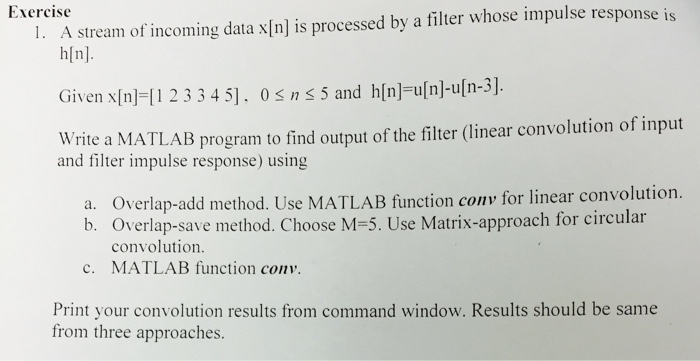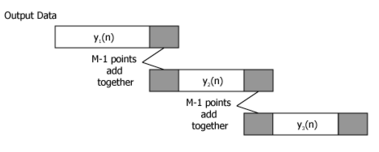Overlap-add Method Matlab Program
How to cancel shutdown timer. First, search for PowerShell or Command Prompt in the start menu and click on it open. In the PowerShell window, execute shutdown -a command. As soon as you execute the command, Windows will show a notification letting you know that the scheduled shutdown has been canceled.
Overlap-Add Method. ▻ Overlap-Save Method. ▷ Assumptions: ▻ FIR filter h(n) length = M. ▻ Block length = L ≫ M. Deepa Kundur (University of Toronto).

X ( n ) = ∫ − 1 / 2 1 / 2 ∑ m = − ∞ ∞ X m ( f ) e j 2 π f n d f = ∑ m = − ∞ ∞ ∫ − 1 / 2 1 / 2 X m ( f ) e j 2 π f n d f = ∑ m = − ∞ ∞ x m ( n )where R is the hop size between successive DFTs, X m is the DFT of the windowed data centered about time m R and x m ( n ) = x ( n ) g ( n − m R ). The inverse STFT is a perfect reconstruction of the original signalas long as ∑ m = − ∞ ∞ g a + 1 ( n − m R ) = c ∀ n ∈ ℤ where the analysis window g ( n ) was used to window the original signal and c is a constant. The following figure depicts the steps followed inreconstructing the original signal. G ( f ) = 0, f ≥ 1 2 R.This equation shows that no aliasing is allowed by thestrong COLA constraint. Additionally, for strong COLA compliance, the valueof the constant c must equal 1. In general, if the short-time spectrum ismodified in any way, a stronger COLA compliant window is preferred.You can use the iscola function to check for weak COLA compliance. Thenumber of summations used to check COLA compliance is dictated by the window length andhop size.
In general, it is common to use a = 1 in ∑ m = − ∞ ∞ g a + 1 ( n − m R ) = c ∀ n ∈ ℤ for weighted overlap-add (WOLA), and a = 0 for overlap-add (OLA). By default, istft uses theWOLA method, by applying a synthesis window before performing theoverlap-add method.In general, the synthesis window is the same as the analysis window. You can constructuseful WOLA windows by taking the square root of a strong OLA window. You can use thismethod for all nonnegative OLA windows. Idm cc extension for google chrome.
DFT example - using fftIn this section, instead of doing it manually, we do it using fft provided by Matlab. Here is the code:N=4;x=2 3 -1 4;t=0:N-1;subplot(311)stem(t,x);xlabel('Time (s)');ylabel('Amplitude');title('Input sequence')subplot(312);stem(0:N-1,abs( fft(x)));xlabel('Frequency');ylabel(' X(k) ');title('Magnitude Response');subplot(313);stem(0:N-1,angle( fft(x)));xlabel('Frequency');ylabel('Phase');title('Phase Response');We'll get the identical results as in the previous section.
